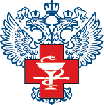 pirogov national medical surgical center
pirogov national medical surgical centernational center for researh and treatment of autoimmune diseases new jersey center for quality of life and health outcome research |
international symposium stem cell transplantation in multiple sclerosis: sharing the experience |
 |
 |
 |
 |
 |
 |
 |
 |
 |
 |
 |
 |
 |
 |
 |
| Pregnancy after High-Dose Immunosuppressive Therapy Followed by Autologous Haematopoietic Stem Cell Transplantation in Patient with Multiple Sclerosis |
|
International Symposium "Stem Cell Transplantation in Multiple Sclerosis", Key-Note Lectures Book, 2009, p. 130 A. Uss, A. Fedulau, N. Milanovich, Y. Motuzova, V. Zmachinsky, A. Baida, P. Mitskevich, L. Drazhina Republic Center of Transplantology and Cellular Biotechnology, Minsk, Belarus Haematopoietic stem cell transplantation (HSCT) is being increasingly used for the treatment of malignant and nonmalignant disorders. The widespread use of HSCT can be attributed to its improved treatment efficacy, wider variety of stem cell sources, and improved transplantation strategies and supportive care, and has resulted in a growing number of long-term survivors. A number of pre-transplant conditioning regimens for HSCT include agents, which may cause germ cell injury, gonadal dysfunction and infertility. To the best of our knowledge some patients treated by HSCT become permanently infertile, but others retain or recover fertility. Although successful pregnancies after HSCT have been reported previously, the evidence suggests that female survivors may be at an increased risk of spontaneous abortions and miscarriages, preterm delivery and low-birth weight babies. A female patient, 22 years old, with a 4-year history of primary-progressive MS was admitted at the 9th Minsk Hospital (Belarus). She continued to deteriorate despite сonventional therapies with an EDSS score increased to 6.0 points. The patient was offered high-dose immunosuppressive therapy followed by AHSCT because due to the course of MS she did not respond to conventional treatments. Peripheral blood stem cells were mobilized with cyclophosphamide (CY) 4 g/m2 in 1 day and daily granulocyte colony-stimulating factor (filgrastim) 5 mg/kg subcutaneously starting from day +4 from CY until the completion of the harvests. The conditioning regimen consisted of CY 120 mg/kg in 2 days (60 mg/kg day -3 and 60 mg/kg day -2). Rabbit antithymocyte globulin Fresenius (Germany) 30 mg/kg/day was administered at day -5, -4, -3. Methylprednisolone (5 mg/kg/day during days -5, -4, -3, with following decrease of the dose) was administered intravenously. After AHSCT her neurological status was stable with slight deterioration in 0,5 points of EDSS score at 24 months after AHSCT. Now her follow-up after AHSCT is 46 months. Her neurological status is stable, with an EDSS score of 6.5 points. MRI evaluations were obtained before mobilization, 6 months after AHSCT, and every year thereafter. There were no new enhancing lesions on gadolinium-enhanced brain MRI. Thirty-nine and a half months after AHSCT she got pregnant. Now she has 26 weeks of gestation. Pregnancy is without complications. The development of fetus is normal. This case provides encouraging data for patients who underwent AHSCT, indicating that reduced intensity conditioning regimen, or non-myeloablative AHSCT could preserve fertility. |
|
© KMart |
(last update) 28/10/2009 |